4 essential points for choosing the right parquet for the bathroom
As wood is a so-called “living” material, it is liable to react according to variations in temperature and humidity. It is therefore important to take this into account in the bathroom, where temperature and humidity tend to be very high.
Choose the right species
Exotic essences are rot-proof. In other words, even when exposed to high humidity for a long time, they do not rot. This is also the reason why these species are preferred when making wooden decks or garden furniture. Exotic essences are therefore to be preferred for the bathroom, which is the water feature par excellence. Among the most elegant:
- Teak;
- Bamboo;
- The merbeau;
- The ipe.
Most exotic species having given rise to massive deforestation, very strict laws now govern their exploitation and trade. It is therefore necessary to systematically check their labels and their traceability upon purchase.
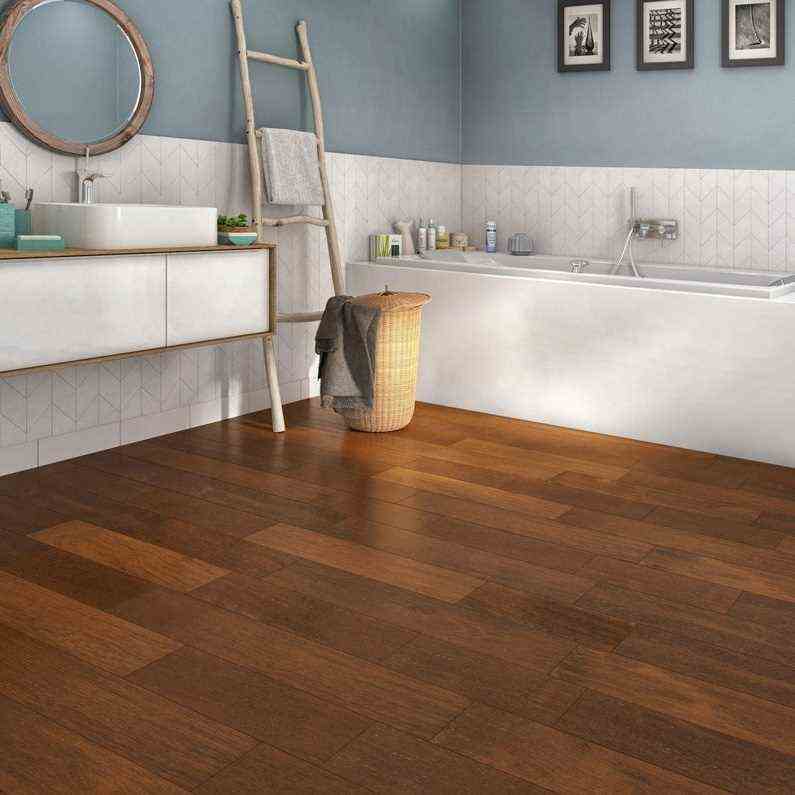
European essences allow for a more classic decor, and they tend to be less expensive to buy. If maritime pine, spruce or ash are possible in the bathroom, it is absolutely imperative that it be treated.
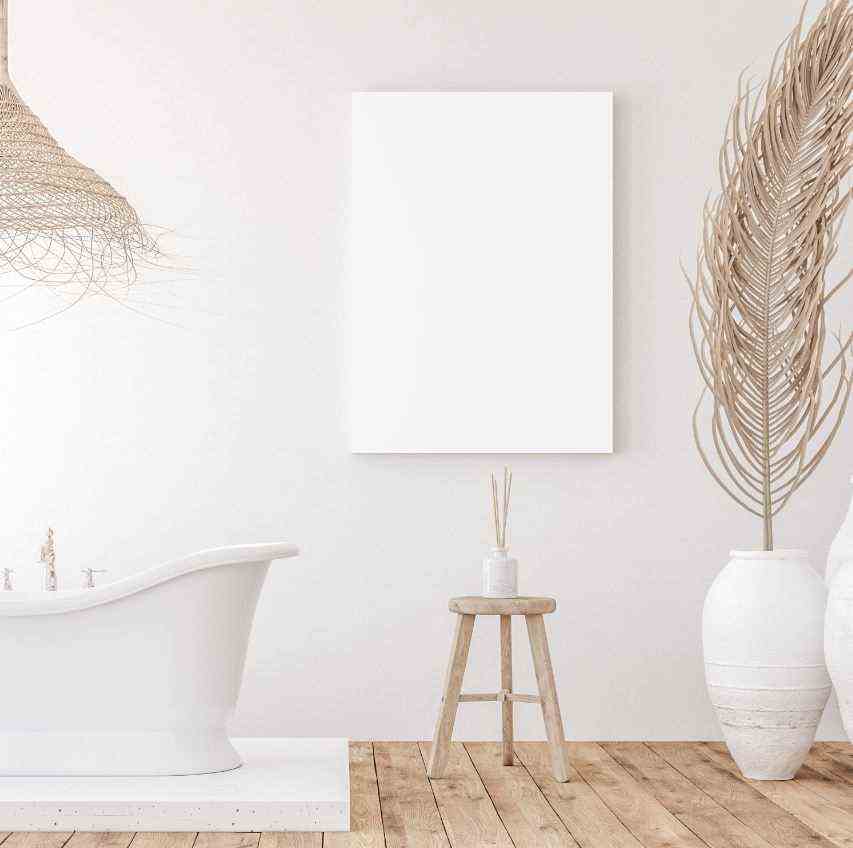
Choosing the right type of parquet
For your parquet to last, bet on solid parquet, whose planks are made in one piece. The use of laminate is not recommended, although it is more affordable and offers a very convincing aesthetic. Exposed to the extreme conditions specific to the bathroom, it will soon lose its beauty. In the medium term, it is therefore not as economical as it seems!
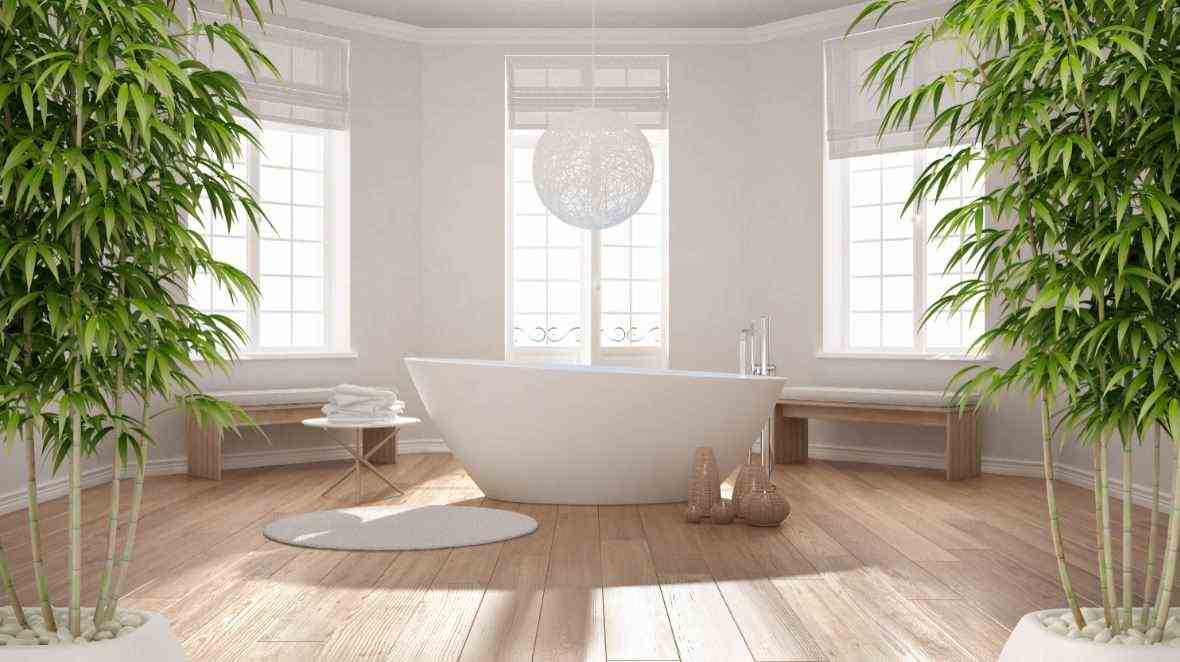
Choose the right treatment
If you go for a rough European wood, you will have to apply it yourself. Oil and varnish have long been the only options. The oil is also recommended, because it lets the wood breathe while treating it in depth. The varnish only offers superficial protection, and it flakes off quickly. Today there are specific products for the bathroom, which combine oils and polyurethane resins. They allow both to protect the wood and to benefit from a pleasant touch barefoot.
Choose the right pose
So that your parquet lasts, opt for the glued installation. It will benefit from better stability in the face of variations in temperature and humidity. If the aesthetic appeals to you, you can also go for a boat deck parquet, fitted with joints which give it optimum stability and impermeability.
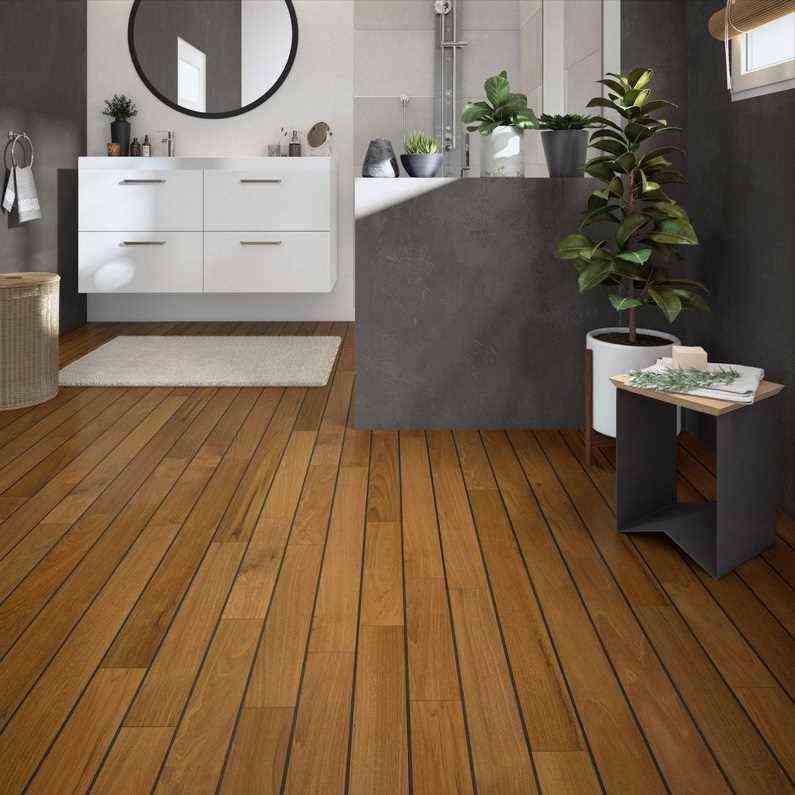
How to maintain the parquet in the bathroom?
You will understand: humidity is the main enemy of parquet in the bathroom. It should also be properly maintained, preventing stains and damage of all kinds.
Remove moisture
Moisture doesn’t just harm your hardwood floor, but the entire bathroom. Molds are also likely to settle on walls and ceilings. To maintain a healthy room – and preserve the integrity of your parquet – make sure your bathroom is well ventilated. You can opt for the installation of a VMC (controlled mechanical ventilation), or for alternatives:
- The aerator or VMP (occasional mechanical ventilation): most often coupled with light, it therefore starts up when you enter and stops a few minutes after you leave the bathroom;
- Distributed mechanical ventilation (VMR), only authorized in the context of renovation.
Properly clean the parquet
The parquet in the bathroom requires a well-dosed cleaning. Forget washing with plenty of water: opt instead for cleaning with a barely dampened cloth. In the event of a stain, if you have opted for an oiled parquet, you will only need to sand with a fine-grain paper to find a parquet as new.

Oil the parquet
As in any other room in the house, the parquet in the bathroom should be treated regularly. Plan to apply an oil at least twice a year. The frequency is likely to be higher depending on different factors: type of wood, quality of ventilation. It is also a question of taking into account the frequency of use of the bathroom: the parquet will be more exposed to humidity on a daily basis if the room is used by a family than by a couple, for example.
The alternative: parquet effect tiles
The aesthetics of the parquet appeal to you, but are you really worried about the start-up and long-term maintenance? Opt for a wood effect tile. Porcelain stoneware offers visually very convincing imitations.
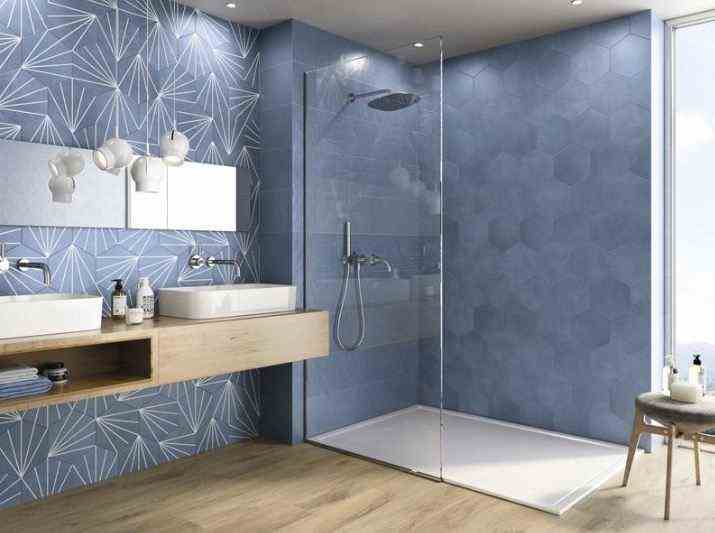
Certainly, the floor will be cold to the touch, but you will enjoy a sublime decoration and an easy to maintain space. In terms of decoration, the possibilities are interesting. Parquet-effect porcelain stoneware tiles are available in a variety of sizes based on the dimensions of traditional planks. You can thus achieve a perfect imitation, for example by opting for the rafter installation.

You can also embark on a more original installation, for example by mixing wood effect tiles with hexagonal tiles like terracotta, for a terribly trendy look.
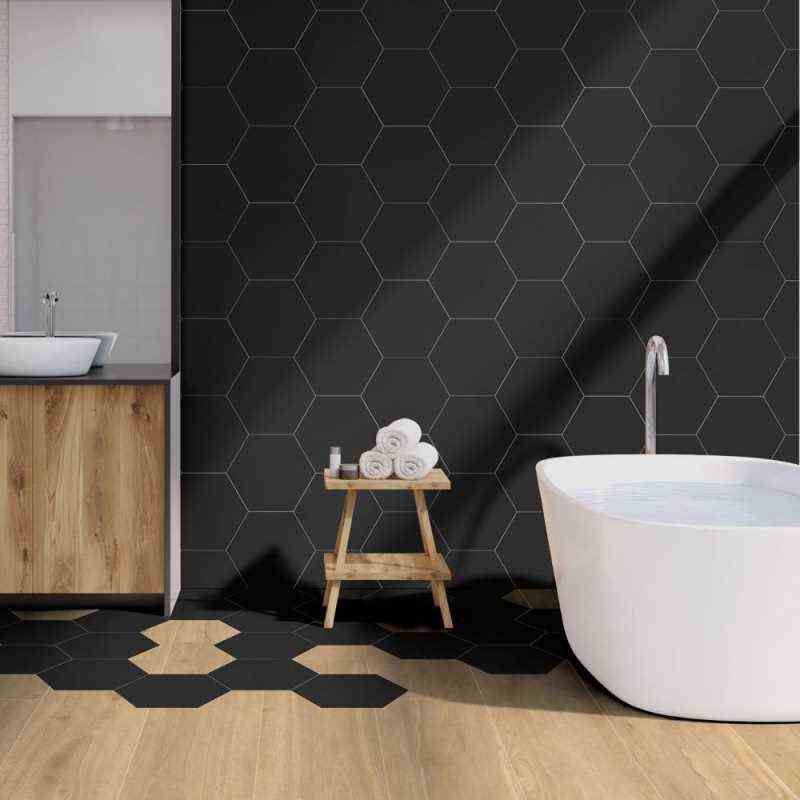
On the budget side, the alternative is also interesting, although it is recommended to avoid entry-level models to enjoy a truly convincing wood effect.
One precaution : choose a model designed specifically for the bathroom. DIN 51 097 is a good benchmark because it is designed to indicate barefoot resistance:
- A: medium adhesion;
- B: high adhesion;
- C: strong adhesion.
Choose B, C or A + B + C tiles in the bathroom.

